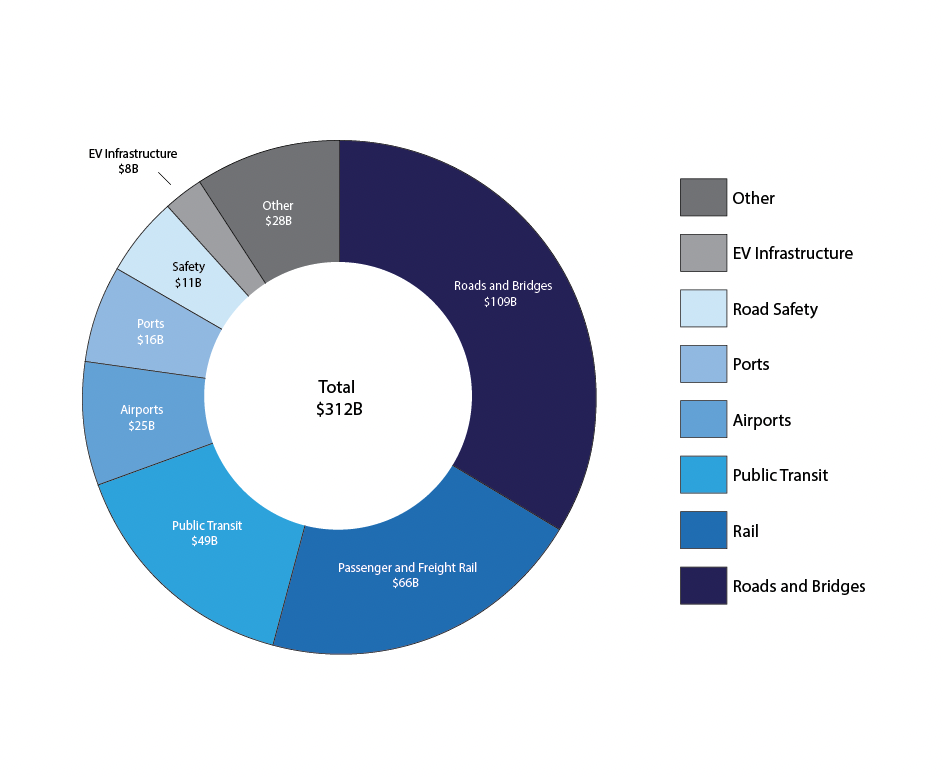On Nov. 15, President Biden signed the Bipartisan Infrastructure Framework (BIF), known formally as the Infrastructure Investment and Jobs Act, into law, marking the nation’s biggest investment in infrastructure in over a decade.
After months of political infighting and cost reductions, the bill was passed at a total of $1.2 trillion, short of Biden’s original $2 trillion plan.
According to the White House, the infrastructure bill aims to improve existing physical infrastructure like roads, bridges, high-speed broadband and public transit while tackling climate change and enhancing America’s economic competitiveness.
Saratoga city council member Rishi Kumar — who unsuccessfully challenged congresswoman Anna Eshoo’s seat in the U.S. House of Representatives during the 2020 election — highlighted the importance of the bill
“America’s cities, towns, and villages — including the communities of Silicon Valley — urgently need investment to maintain critical infrastructure,” Kumar said in an interview with The Falcon. “We need to invest in our future.”
What’s the point of the Bipartisan Infrastructure Framework?
According to the American Society of Civil Engineers, the U.S. received a “C-” grade in infrastructure in 2020 and needed an approximate $2.59 trillion in investment to address various issues ranging from crumbling roads and bridges to environmental protection.
America’s infrastructure spending has fallen behind rival nations such as China, which spent approximately $8 trillion in infrastructure in 2020 — equivalent to around 5.6% of its overall Gross Domestic Product (GDP). On the other hand, the U.S. spent a mere $146 billion directly on infrastructure in 2020, less than 1% of its overall GDP.
Kumar said the severity of the issue is exemplified by the Santa Clara Valley Transportation Authority (VTA), which plans and operates the country’s road and transit network and “has been called out as one of the most inefficient services of the government, losing about $9.30 per rider.”
The BIF is aimed at updating the nation’s crumbling infrastructure for future needs.
What percentage of funds will be allocated to California, and which sectors will be allocated to?
According to CNBC, California will receive around $44.56 billion in funding — the most of any state. Per capita spending will be about $1,250 per resident, with $34.8 billion in funding allocated to highways and public transit alone.
For highways, the bill aims to improve and repair aging and crumbling roads, with the White House detailing a goal of fixing 20,000 miles of decaying roads and restoring over 10,000 bridges.
“Investments will rebuild community transportation projects, make streets safer, improve bridges, expand broadband infrastructure, develop digital equity and cybersecurity, expand water infrastructure projects, strengthen wildfire mitigation, flood prevention, watershed protection, ecosystem restoration and grid resilience,” Kumar said.
The majority of funds allocated to California by the framework are apportioned to transportation, wildfire prevention and drought resistance. An additional $34.8 billion will be spent to improve highways and public transit systems like Caltrain, which is apportioned $1.1 billion to fix local rail networks.
What are some of the local effects of the bill in Saratoga
and surrounding areas?
The bill utilizes earmarks — provisions inserted by politicians that direct money to projects in their district or state — ensuring that funding allocated toward a project will not be lost through the chain of bureaucracy.
“Silicon Valley needs a huge investment to ensure that we remain the innovation capital of the world,” Kumar said. “We need a plan to address our traffic woes and a water infrastructure plan to ensure we get through these recurring droughts. California needs a better plan than repeated failures of PG&E and recurring fires. It is very important to expand our broadband and to make it readily accessible.”
According to the L.A. Times, Eshoo — Saratoga’s congressional representative — earmarked $1.2 million for a pedestrian walkway in Saratoga (the specific location of the walkway is unclear).
Other local earmarks include $6.5 million for the Golden Gate Physical Suicide Deterrent System Project, around $11 million for improvements to Highway 37 in the North Bay, upgrades to Caltrain crossings and BART renovations in the East Bay.
Many transit projects that have been put on the back burner for the past couple of years are also receiving new funding, such as an extension from San Jose to Santa Clara for BART, the high-speed rail network running across California, as well as regional expansions of highway networks, including the relocation of Oakland’s I-980 freeway, which has infamously divided the city.
What other benefits might help California?
The bill includes many other provisions, many of which are not specific to California but will likely help the state indirectly.
Paul Bledsoe, a former Clinton White House climate adviser now with the Progressive Policy Institute, said the bill will help transition the nation away from fossil fuels.
“Electrifying America’s cars and trucks, creating a nationwide smart grid, expanding electricity storage to allow more renewable energy, establishing universal high-speed internet — all of these are intended to boost the productivity and competitiveness of the economy, while also cutting emissions,” Bledsoe said to CNBC.
According to the New York Times, the bill aims to replace 50,000 diesel public transit vehicles and 20% of school buses with vehicles that run on alternative forms of fuel.
The bill has also allocated $150 billion for clean energy and climate change protections, including protection against wildfires, which have marred California in recent years.
Kumar believes that the bill has arrived at the right time.
“We must make Silicon Valley increasingly accessible and affordable, attracting the best talent of the world — without wrecking our quality of life issues,” Kumar said. “Such a plan will be a step in the right direction. An efficient transportation plan will aid our supply chain and improve our quality of life, [allowing] Silicon Valley [to] continue to be the world leader in innovation, attracting the best talents to benefit our economy.”

























